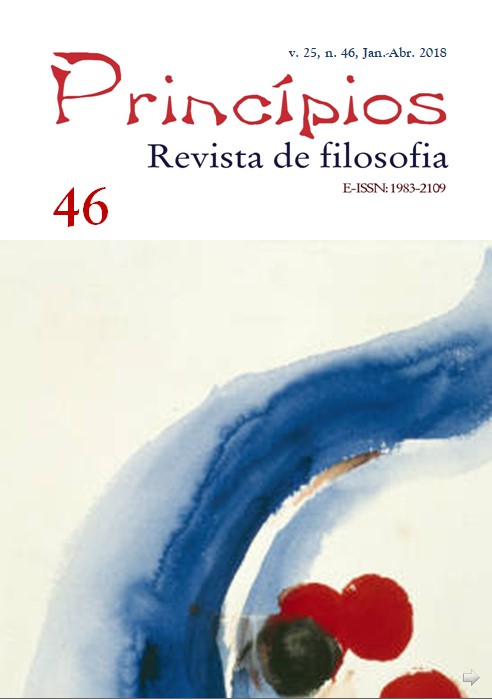Uma Aplicação do Hexágono Lógico: organizando sistematicamente os conceitos de razão e causalidade [An application of the logical hexagon: a systematic organization of the concepts of reason and causality]
DOI:
https://doi.org/10.21680/1983-2109.2018v25n46ID11433Keywords:
Hexágono Lógico, Razão, Causalidade [Logical hexagon, Reason, Causality]Abstract
Este trabalho tem como objetivo fornecer uma aplicação do hexágono lógico aos conceitos metafísicos de razão e de causalidade. Após uma breve apresentação da abordagem de Blanché, passa-se à construção das estruturas geométricas. Primeiramente, são apresentadas duas tríades – razão lógica, acaso, causa; razão, não-causa, non sequitur. Em seguida, apresenta-se o hexágono lógico como a díade das duas primeiras estruturas. Conclui-se que o hexágono lógico é uma estrutura capaz de organizar sistematicamente os conceitos de razão e de causalidade.
[This paper aims to show an application of the logical hexagon to the metaphysical concepts of reason and causality. After a brief presentation of Blanché’s approach, we proceed to build the geometrical structures. First, we show two triads – logical reason, chance, cause; reason, non-cause, non sequitur. Then we present the logical hexagon as a dyad built out of the first two structures. We conclude that the logical hexagon is able to organize the concepts of reason and causality in a systematic way.]
Downloads
References
BLANCHÉ, Robert. Estruturas intelectuais: ensaio sobre a organização sistemática dos conceitos. Trad. Gita K. Guinsburg. São Paulo: Perspectiva, 2012.
DOS SANTOS, Mário Ferreira. Filosofia e cosmovisão. São Paulo: É Realizações, 2015.
GARRETT, Brian. Metafísica. Trad. Felipe Rangel Elizalde. São Paulo: Artmed, 2008.
LEIBNIZ, Gottfried Wilhelm. Monadologia. Trad. Adelino Cardoso. Lisboa: Colibri, 2017.
MORETTI, Alessio. Why the logical hexagon? Logica Universalis. v. 6, n. 1, jun. 2012, p. 69-107.
SCHOPENHAUER, Arthur. On the fourfold root of the principle of sufficient reason. Trad. E. Paine. Chicago: Open Court, 1997.
Downloads
Published
How to Cite
Issue
Section
License
Authors retain copyright and grant the journal right of first publication with the work simultaneously licensed under a Creative Commons Attribution License that allows others to share the work with an acknowledgement of the work's authorship and initial publication in this journal.


 Português (Brasil)
Português (Brasil) English
English Español (España)
Español (España) Français (Canada)
Français (Canada)


